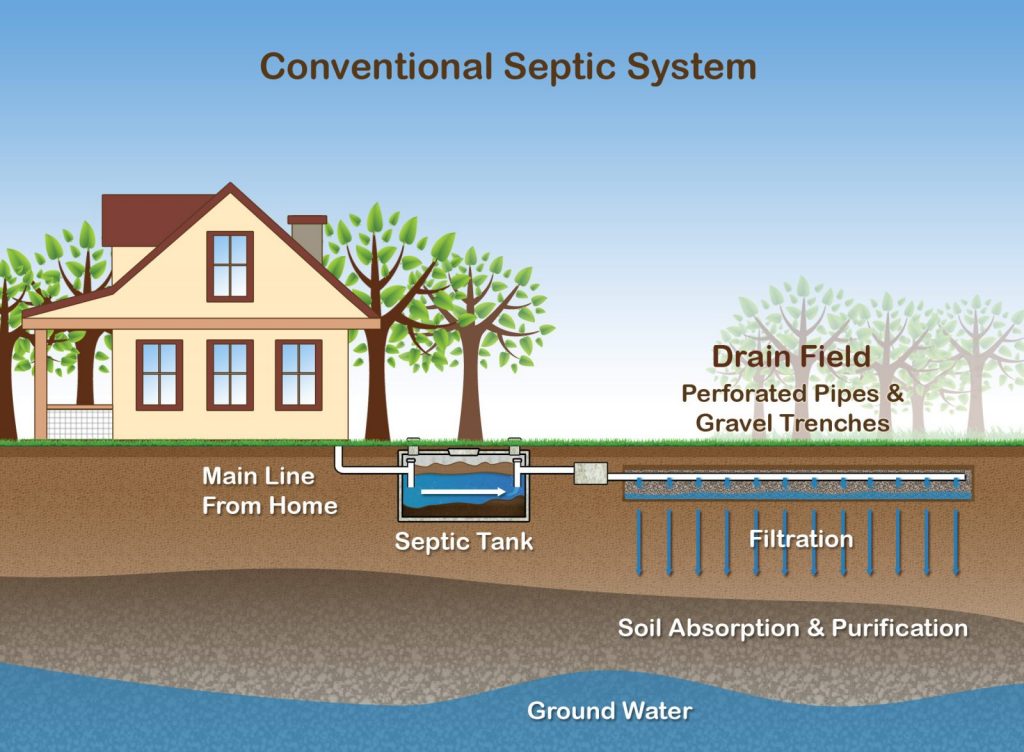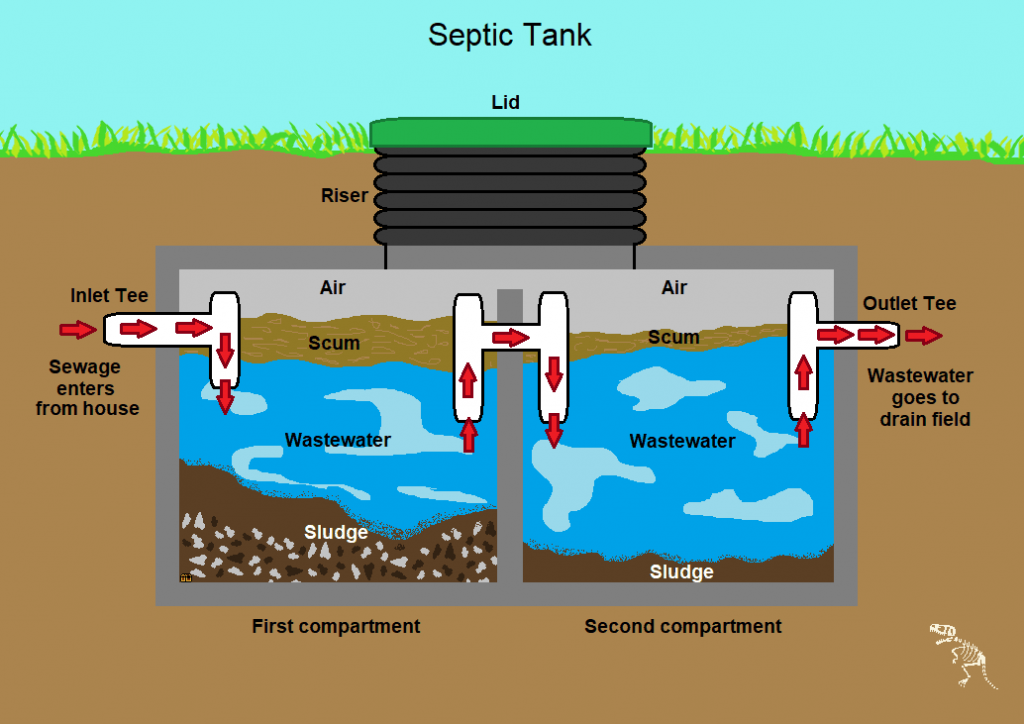The septic tank holds wastewater from the home until solid debris settles at the bottom of the tank (the sludge layer) and lighter waste, such as oil, rises to the top to form the scum layer. Between the two layers lies clarified liquid, which flows into an outlet pipe and is gradually dissipated through a drain field. Bacteria in the septic tank naturally break down organic waste matter and slow the accumulation of the sludge layer.
 HOW CAN INSUFFICIENT BACTERIA BE A CAUSE OF SEPTIC TANK SYSTEM FAILURE?
HOW CAN INSUFFICIENT BACTERIA BE A CAUSE OF SEPTIC TANK SYSTEM FAILURE?
The everyday waste, from paper to oil to grease, that you put into your septic system is typically broken down by the millions of naturally occurring bacteria found in your septic tank. When some common household chemicals like antibacterial soaps and bleach are overused, they can kill off these beneficial bacteria that populate your septic tank. Additionally, excessive amounts of water going down the drain will flush out a large portion of the beneficial bacteria growing in your septic tank. In such a weakened system, the sewage can build up more quickly, eventually blocking the outlet pipe or possibly clogging your drain field. When that happens, a septic system backup can occur, requiring emergency pumping and possible drain field replacement.
WHAT IS SEPTIC TANK SYSTEM BACKUP?
A septic system backup is an ugly, smelly mess inside and outside of your home. Excess build-up of sewage solids in the tank can go unnoticed until it eventually causes the system to backup and break down. When that happens, additional sewage and wastewater may backup into your house, emptying out into your bathrooms, kitchen sinks and laundry sinks. That awful smelling wastewater can also backup into your yard, low-ground areas, and even in nearby ponds.
MAINTAINING YOUR SEPTIC TANK SYSTEM
1) Have your septic tank system inspected and pumped regularly
Sludge in large quantities can only be eliminated by a professional pumper. You should have a pumper inspect your septic system to determine if the accumulation of solid waste is too high and needs to be removed. According to the Environmental Protection Agency (EPA), the average septic system should be inspected at least every three years. The EPA also outlines four key factors also influence the frequency with which you’ll need to have your septic system pumped: household size, total wastewater generated, volume of solids in wastewater, and septic tank size. Talk with your local septic service professional to determine if your septic tank should be inspected and pumped more frequently. You should not inspect the septic tank yourself since the gasses that accumulate in the tank can be lethal.
2) Watch what you pour down the drains
The eco-system of the septic tank is very delicate. Some household chemicals like bleach and anti-bacterial soaps can kill beneficial bacteria, so you should avoid flushing them down your drains. According to the EPA, flushing or pouring the wrong items—things like cooking oil, grease, toxic cleaners, and paints—into your septic system can also increase how often you need to have your septic tank pumped by a professional.
Finally, make sure that you monitor how much water enters your septic system each day. By conserving the amount of water you use in the home, you can improve the operation of your septic system and reduce the risk of septic system failure. The EPA recommends reducing the amount of wastewater entering your septic system by using high-efficiency toilets and showerheads, faucet aerators, and proper laundry technique. Also be sure that you are selecting the correct load size when you use your washing machine, and try to spread out your use of the machine throughout the week. Overuse of your washing machine can potentially damage your septic system’s drain field, the most expensive component of your septic system.

